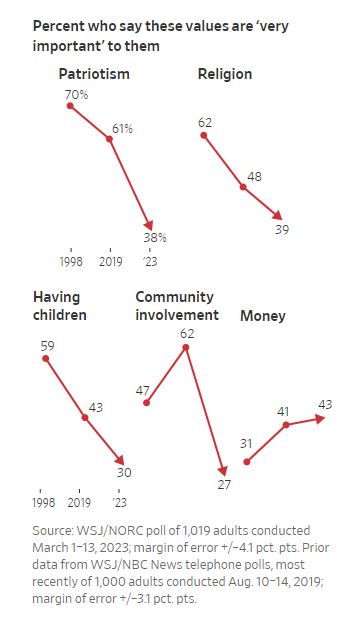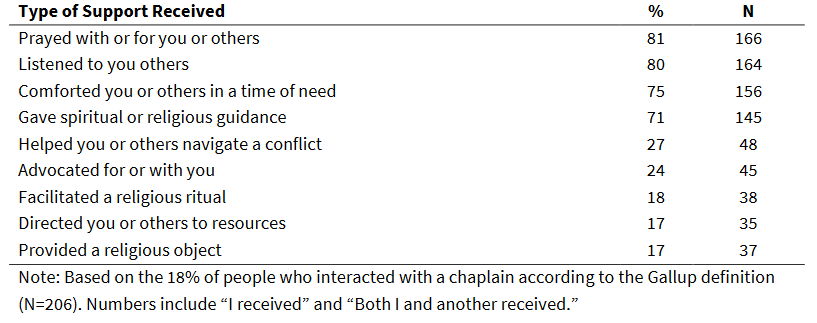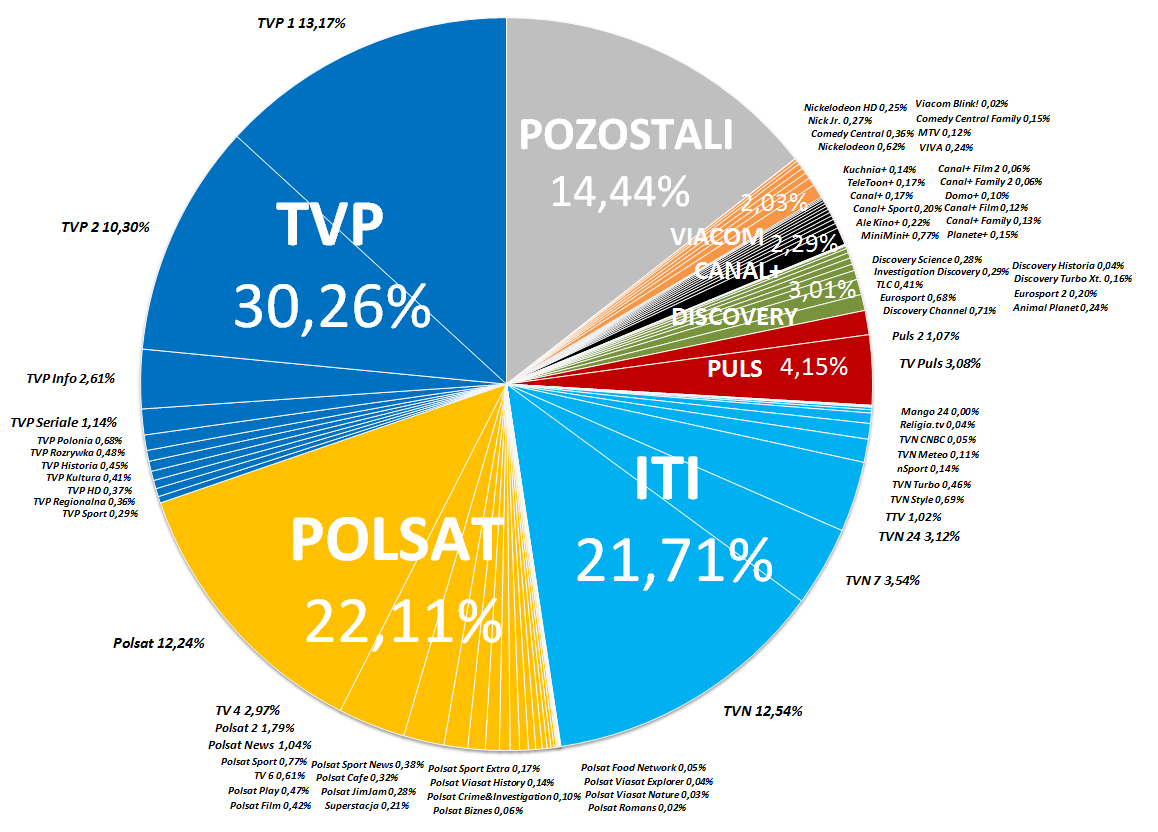
 nd that the only priority “that has grown in importance in the past quarter-century is money, which was cited as very important by 43 percent in the new survey, up from 31 percent in 1998.” Only 58 percent of people responding to the Wall Street Journal poll said “tolerance for others” was very important; four years ago, that number stood at 80 percent, reports The Spectator magazine (March 28). But in an article in Commentary (March 27), Abe Greenwald cautions against pronouncing doom for American religion and society. He notes that when “asked to rate these values, respondents could choose from ‘very important,’ ‘somewhat important,’ ‘not that important,’ or ‘not important at all.’ If you tally the ‘very important’ and ‘somewhat important’ percentages and compare them to the combined ‘not that important’ and ‘not important at all’ ones, it’s a clear win for tradition and conservative values. On patriotism, it’s 73 percent to 27 percent; on religion, 60 percent to 40 percent; on having children, 65 percent to 33 percent. And on marriage, 70 percent to 28 percent.”On his blog The Intersection (March 28), Republican pollster Patrick Ruffini expresses some doubts about the poll’s results. He writes that the “dramatically different results we see from 2019 and 2023 are because the data was collected differently. The March 2023 survey was collected via NORC’s Amerispeak, an extremely high-quality online panel. In the fine print below the chart, we can see that data from previous waves was collected via telephone survey.” Ruffini writes that the 2023 survey probably does a better job at revealing the true state of patriotism, religiosity, community involvement, and so forth, since respondents are more likely to report their true views online rather than over the phone to pollsters. But he concludes, “The problem is that the data from previous waves were inflated by social desirability bias—and can’t be trended with the current data to generate a neat-and-tidy viral chart…”
nd that the only priority “that has grown in importance in the past quarter-century is money, which was cited as very important by 43 percent in the new survey, up from 31 percent in 1998.” Only 58 percent of people responding to the Wall Street Journal poll said “tolerance for others” was very important; four years ago, that number stood at 80 percent, reports The Spectator magazine (March 28). But in an article in Commentary (March 27), Abe Greenwald cautions against pronouncing doom for American religion and society. He notes that when “asked to rate these values, respondents could choose from ‘very important,’ ‘somewhat important,’ ‘not that important,’ or ‘not important at all.’ If you tally the ‘very important’ and ‘somewhat important’ percentages and compare them to the combined ‘not that important’ and ‘not important at all’ ones, it’s a clear win for tradition and conservative values. On patriotism, it’s 73 percent to 27 percent; on religion, 60 percent to 40 percent; on having children, 65 percent to 33 percent. And on marriage, 70 percent to 28 percent.”On his blog The Intersection (March 28), Republican pollster Patrick Ruffini expresses some doubts about the poll’s results. He writes that the “dramatically different results we see from 2019 and 2023 are because the data was collected differently. The March 2023 survey was collected via NORC’s Amerispeak, an extremely high-quality online panel. In the fine print below the chart, we can see that data from previous waves was collected via telephone survey.” Ruffini writes that the 2023 survey probably does a better job at revealing the true state of patriotism, religiosity, community involvement, and so forth, since respondents are more likely to report their true views online rather than over the phone to pollsters. But he concludes, “The problem is that the data from previous waves were inflated by social desirability bias—and can’t be trended with the current data to generate a neat-and-tidy viral chart…”

Source: Allen Browne, Seeking the Kingdom.
 Source: Chaplaincy Innovation Lab.
Source: Chaplaincy Innovation Lab.
 Shares in the television market in Poland in 2013 (source: Truszek, Wikimedia Commons).
Shares in the television market in Poland in 2013 (source: Truszek, Wikimedia Commons).
Sakalli looked at areas of the country where each network had the most viewers and found that religious participation increased in places where TVN was strong and there was no alternative media, while decreasing in areas where Polska TV was dominant. Sakalli said that in general secularization had been gradually increasing in Poland before 2015, but there has been a reversal in these areas of populist media coverage. To test the relationship between the media and religiosity, Sakalli ran an experiment where subjects were exposed to both populist and independent media, which featured videos critical of the church. Those exposed to the independent media decreased their trust in the church and reported lower donations and participation in Mass. The experimental effects were strongest among rural populations, he noted.